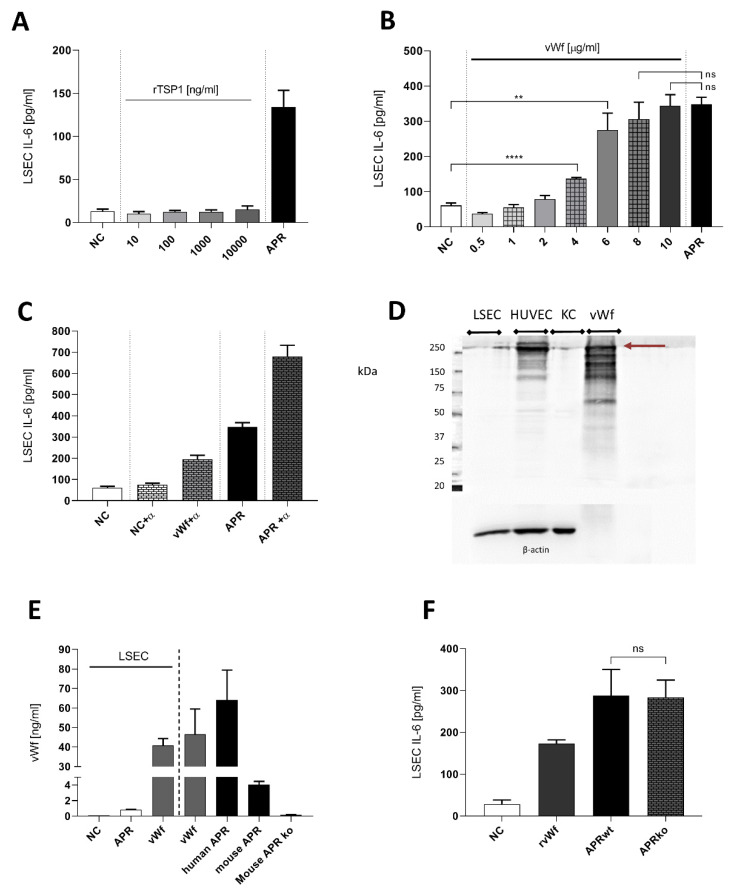Figure 4.
Characterization of soluble factors potentially inducing interleukin-6 secretion by liver sinusoidal endothelial cells. (A): Concentrations of thrombospondin 1 (TSP1) from 10 to 1000 ng/mL did not stimulate IL-6 secretion by LSEC. NC: negative control, tyrode buffer. (B): purified full-length human von Willebrand factor (vWF) was titrated on mouse LSEC. High concentrations of vWF resulted in an effect similar to human APR (positive control). NC: negative control, culture medium. (C): Neutralization of human APR or 8 μg/mL purified human vWF with anti-human vWF polyclonal antibody (α) 1/150. Combination of the antibody with APR or vWF resulted in an unexpected increase of IL-6 secretion by LSEC. NC: negative control, culture medium. (D): Western blot for expression of vWF in LSEC, HUVEC, KC as a positive control, human purified full-length vWF (2.5 μg). Contrarily, to HUVEC, LSEC and KC demonstrated low expression of vWF (250 kDa band, burgundy arrow). Purified full-length vWF exhibited several unspecific bands that were similar to HUVEC. Loading was controlled with β-actin. 7.5% acrylamide gel. n = 1 (E): Presence of mouse vWF was evaluated by ELISA in LSEC medium after treatment with APR. Human and mouse APR shows high amounts of vWF. NC: negative control, culture medium. (F): APR prepared from mouse double ko for vWF gene. APR was still able to induce IL-6 secretion by LSEC, 3 replicas. NC: negative control, culture medium. n = 1. **** p < 0.0001, ** p-value between 0.001, 0.01 (t-test),2 ns: non-significant. If not otherwise specified, presented data are representative of 2 or 3 independent experiments.

